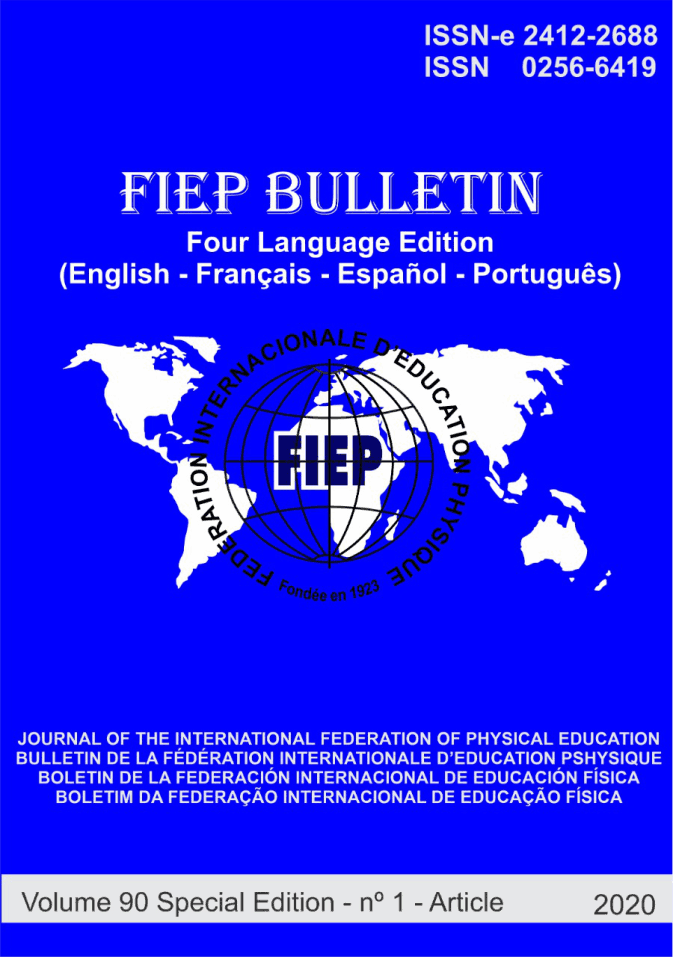PERCEPTUAL ANSWERS PRESENTED BY SOCCER ATHLETES DURING PRE AND POST-TRAINING PERIODS: A SYSTEMATIC REVIEW WITH METANALYSIS
Palavras-chave:
Visual perception, Motor skills, Decision makingResumo
Perceptual training plays an important role during the teaching and learning process of athletes. This process should be aimed at the development of perceptions, thus improving motor skills and physical abilities of athletes, seeking new methodologies and techniques to make this process easier. Visual perception has a very important cognitive function during the training periods, because when new technologies are introduced for the development of visual perception, they can provide an interesting learning, as well as contribute to the reduction of reaction time, accuracy of athletes. The objective of the present study was to analyze the perceptual responses in athletes during the pre- and post-training periods. This is a systematic review with meta-analysis of randomized clinical studies that analyze the perceptual trainings in athletes, without language restrictions and with dates of studies with at least 20 years, in the following databases: Pubmed, ScienceDirect, ClinicalTrials, VHL (LILACS and MEDLINE), SCOPUS, EBSCO, SciELO, as well as the gray literature base: OpenGrey.eu, DissOnline, and the Reasearch Gate. Three articles were analyzed and comparisons were established between the pre- and post-training periods. After all triage, three articles were analyzed in full and established comparisons between pre-workout, post-workout and control groups. The main results were: Comparison between the training of the post-experimental and post-control groups, with 95% CI between 0.51 and 2.32%. The overall effect test yielded p = 0.02, revealing that such difference was significant. However, the heterogeneity, I² = 62% p value = 0.07, was high. Comparison between pre-experimental and post-experimental training, with 95% CI between -1.60 and 19.40%. The test for the general effect obtained p <0.01, revealing that this difference was significant. However, the heterogeneity, I² = 93% p value <0.01, was also high. From the results found, it is concluded that the percentage of success in the passes of soccer players was maoir after training with 3D video system.Downloads
Os dados de download ainda não estão disponíveis.
Downloads
Edição
Seção
TRABALHOS PUBLICADOS
Licença
Autores que publicam nesta revista concordam com os seguintes termos:- Autores mantém os direitos autorais e concedem à revista o direito de primeira publicação, com o trabalho simultaneamente licenciado sob a Licença Creative Commons Attribution que permite o compartilhamento do trabalho com reconhecimento da autoria e publicação inicial nesta revista.
- Autores têm autorização para assumir contratos adicionais separadamente, para distribuição não-exclusiva da versão do trabalho publicada nesta revista (ex.: publicar em repositório institucional ou como capítulo de livro), com reconhecimento de autoria e publicação inicial nesta revista.
- Autores têm permissão e são estimulados a publicar e distribuir seu trabalho online (ex.: em repositórios institucionais ou na sua página pessoal) a qualquer ponto antes ou durante o processo editorial, já que isso pode gerar alterações produtivas, bem como aumentar o impacto e a citação do trabalho publicado (Veja O Efeito do Acesso Livre).
Como Citar
PERCEPTUAL ANSWERS PRESENTED BY SOCCER ATHLETES DURING PRE AND POST-TRAINING PERIODS: A SYSTEMATIC REVIEW WITH METANALYSIS. (2020). Fiep Bulletin - Online, 90(1). https://ojs.fiepbulletin.net/fiepbulletin/article/view/6272










